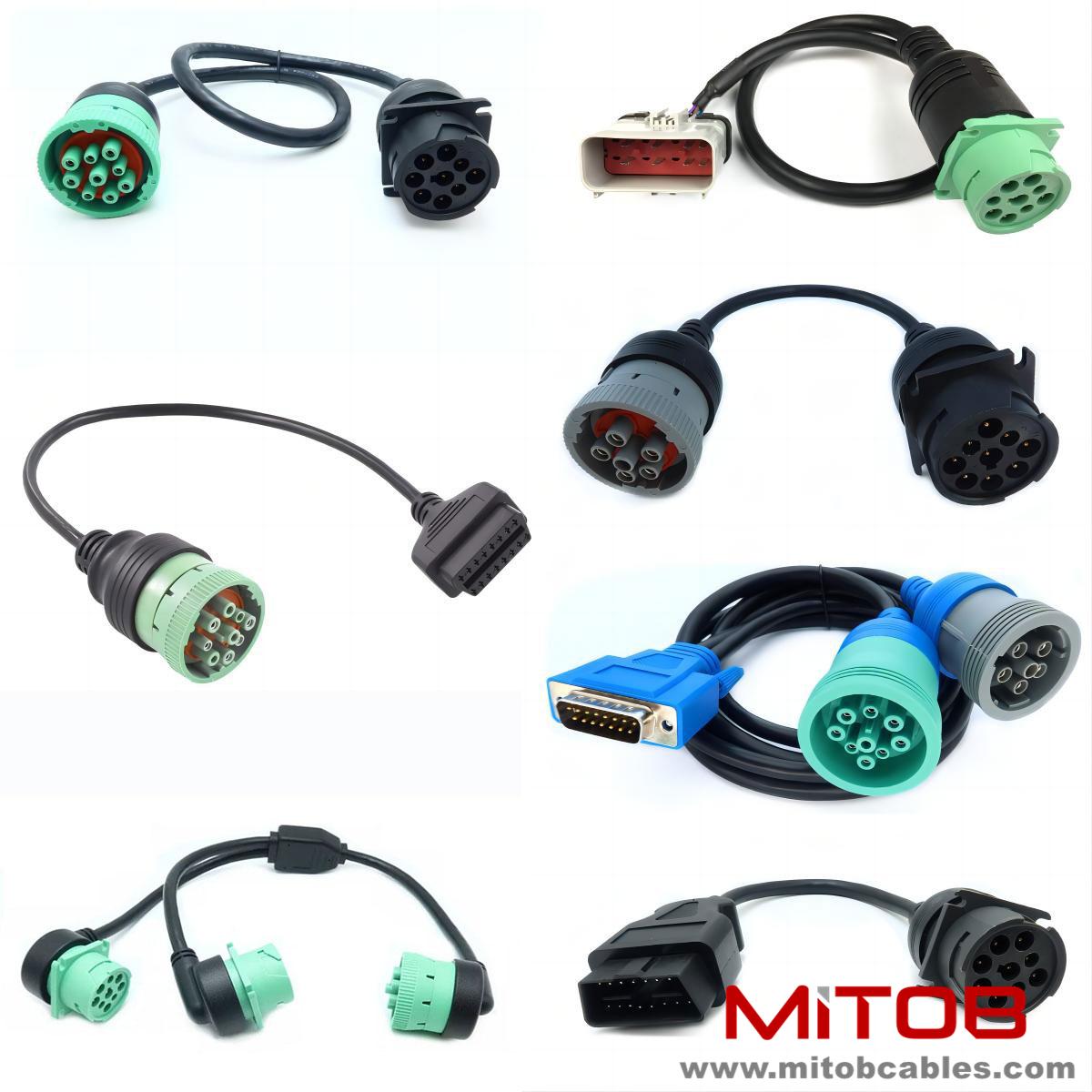Application of J1939 male to female cable in fleet management
J1939 male to female cable plays a key role in fleet management, with its core applications reflected in data acquisition, equipment compatibility expansion, system integration, and diagnostic maintenance. The following is a specific analysis:

1. Data collection and monitoring
Real time data transmission: J1939 protocol is a widely used communication protocol in commercial vehicles such as trucks, buses, and construction machinery, supporting data transmission of key components such as engines, transmissions, and braking systems. The male to female cable can be used to connect the vehicle OBD-II interface or J1939 diagnostic interface, and transmit real-time vehicle operation data (such as vehicle speed, RPM, fuel consumption, fault codes, etc.) to the fleet management system.
Remote monitoring: Through cable connections, fleet managers can remotely obtain vehicle status, achieve real-time monitoring and early warning, and improve management efficiency.
2. Device compatibility and scalability
Interface adaptation: Different vehicles or devices may use different types of J1939 interfaces (such as male or female), and male to female cables can solve the problem of interface mismatch and ensure device compatibility.
Multi device connection: In fleet management, it may be necessary to simultaneously connect multiple devices (such as GPS trackers, dashcams, sensors, etc.), and the conversion function of cables enables these devices to access the vehicle network through a unified interface.
3. System integration and debugging
Equipment integration: Fleet management systems typically require the integration of multiple devices. J1939 male to female cables can serve as a bridge to connect different devices to the vehicle bus, enabling data sharing and collaborative work.
Debugging and maintenance: During equipment installation or maintenance, cables can be used to temporarily connect diagnostic tools, quickly locate and solve problems, and reduce downtime.
4. Fault diagnosis and maintenance
Fault code reading: By connecting diagnostic equipment through cables, the vehicle's fault codes (DTC) can be read to help technicians quickly locate the cause of the fault.
Remote diagnosis: Combined with the fleet management system, technicians can remotely diagnose vehicle problems, reducing on-site maintenance costs and time.
5. Optimization of fleet management
Data analysis: By collecting vehicle data, fleet managers can analyze driving behavior, fuel consumption, vehicle health status, etc., and optimize scheduling and maintenance plans.
Compliance management: Ensure that vehicles comply with emission standards, safety regulations, and other requirements, and that relevant data can be monitored in real time through devices connected by cables.
6. Actual application scenarios
Logistics fleet: Real time monitoring of vehicle location, fuel consumption, driving behavior, optimizing routes and scheduling.
Engineering fleet: Monitor the operating status of construction machinery, prevent malfunctions, and improve equipment utilization.
Public transportation: Monitor the operation status of buses or coaches to ensure safety and service quality.
Contact: Kevin
Phone: 0086-18823374992
E-mail: kevin@mitobcable.com
Whatsapp:
Add: Bld B2, Floor7 , Xinghe Zhongkai AI Industrial Park, Zhongkai High-tech Zone, Huizhou,China